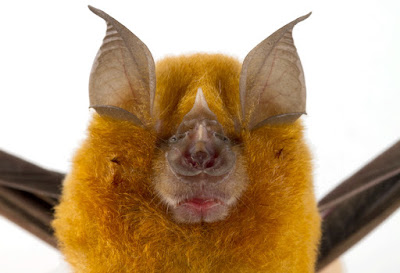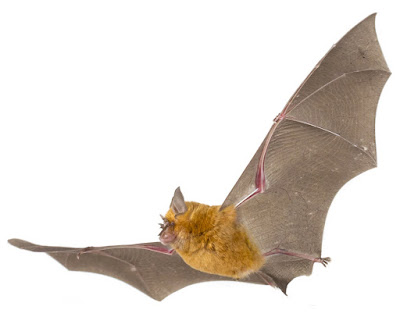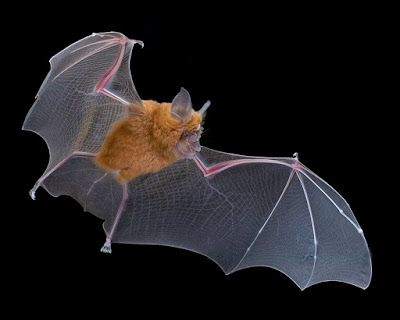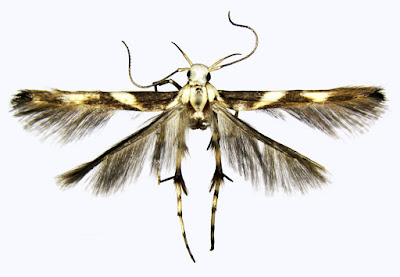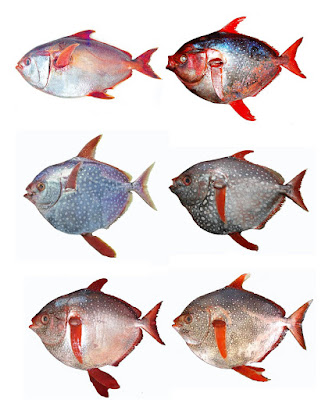[Most Recent Entries] [Calendar View]
Thursday, April 26th, 2018
| Time | Event | ||||
| 1:54a | [Mammalogy • 2018] Integrative Taxonomy Resolves Three New Cryptic Species of Small southern African Horseshoe Bats (Rhinolophus)
Abstract Examination of historical and recent collections of small Rhinolophus bats revealed cryptic taxonomic diversity within southern African populations previously referred to as R. swinnyi Gough, 1908 and R. landeri Martin, 1832. Specimens from Mozambique morphologically referable to R. swinnyi were phylogenetically unrelated to topotypic R. swinnyi from the Eastern Cape Province of South Africa based on cytochrome b sequences and showed distinctive echolocation, baculum and noseleaf characters. Due to their genetic similarity to a previously reported molecular operational taxonomic unit (OTU) from north-eastern South Africa, Zimbabwe and Zambia, we recognize the available synonym (R. rhodesiae Roberts, 1946) to denote this distinct evolutionary species. This new taxon is genetically identical to R. simulator K. Andersen, 1904 based on mtDNA and nuclear DNA sequences but can easily be distinguished on morphological and acoustic grounds. We attribute this genetic similarity to historical introgression, a frequently documented phenomenon in bats. An additional genetically distinct and diminutive taxon in the swinnyi s.l. group (named herein, Rhinolophus gorongosae sp. nov.) is described from Gorongosa National Park, central Mozambique. Specimens from Mozambique referable based on morphology to R. landeri were distinct from topotypic landeri from West Africa based on mtDNA sequences, and acoustic, noseleaf and baculum characters. This Mozambique population is assigned to the available synonym R. lobatus Peters, 1952. Peter J. Taylor, Angus Macdonald, Steven M. Goodman, Teresa Kearney, Fenton P. D. Cotterill, Sam Stoffberg, Ara Monadjem, M. Corrie Schoeman, Jennifer Guyton, Piotr Naskrecki and Leigh R. Richards. 2018. Integrative Taxonomy Resolves Three New Cryptic Species of Small southern African Horseshoe Bats (Rhinolophus). Zoological Journal of the Linnean Society. DOI: 10.1093/zoolinnean/zly024 Descoberta de novas espécies de morcegos no Parque Nacional da Gorongosa e no Norte de Moçambique A new study just published in the Zoological Journal of the Linnean Society described a new bat species in southern Africa, named Rhinolophus gorongosae; it seems to occur only in Gorongosa National Park in Mozambique and possibly also on nearby Mount Mecula. Using genetic and morphological techniques, R. gorongosae was found to be distinct from neighboring horseshoe bat populations. With a mass of only 5 g this “dwarf” becomes Africa’s smallest horseshoe bat. facebook.com/gorongosa/posts/10156533087723729 | ||||
| 9:25a | [Botany • 2017] Polystichum hastipinnum • A New Cave Fern (subg. Haplopolystichum; Dryopteridaceae) from Guangdong, China
Abstract A new species of Polystichum (subg. Haplopolystichum; Dryopteridaceae), Polystichum hastipinnum, is described from a limestone cave in northern Guangdong, China. Polystichum hastipinnum is most similar to P. kwangtungense in having oblong pinnae, but the former has stipe and rachis scales denser, basalmost pair of pinnae hastate and with bases somewhat cordate, while the latter has stipe and rachis scales much sparser, basalmost pair of pinnae oblong and with bases cuneate. Keywords: Cave ferns, Polystichum hastipinnum, P. kwangtungense, Pteridophytes, China
Polystichum hastipinnum G.D. Tang & Li Bing Zhang, sp. nov. ... Etymology:— From the Latin, hasti-, hastate, and -pinnum, pinnae, referring to the hastate basalmost pinnae. Guang-Da Tang, Lin Huang, Jia-Yu Li, Zeng-Li He and Li-Bing Zhang. 2017. Polystichum hastipinnum (subg. Haplopolystichum; Dryopteridaceae), A New Cave Fern from Guangdong, China. Phytotaxa. 309(1); 66-72. DOI: 10.11646/phytotaxa.309.1.6 ResearchGate.net/publication/317630570_Polystichum_hastipinnum_a_new_cave_fern_from_Guangdong_China | ||||
| 9:28a | [Entomology • 2018] A Taxonomic Review of the Genus Palumbina Rondani, 1876 (Lepidoptera, Gelechiidae, Thiotrichinae) from China, with Descriptions of Twelve New Species
Abstract Palumbina is a small genus of Gelechiidae that includes species distributed only in the Old World. It was recently assigned to the subfamily Thiotrichinae, but the morphological and molecular studies at the species level have not been extensively conducted. In this study, we focused on the taxonomy of the Chinese Palumbina using morphology and DNA barcoding analysis to confirm the species identification and the relationship among closely related species. In China, three species of this genus were recorded previously. A total of 19 were finally recognized in the present study, including 12 new species: P. magnisigna sp. nov., P. grandiunca sp. nov., P. melanotricha sp. nov., P. atricha sp. nov., P. sigmoides sp. nov., P. acuticula sp. nov., P. rugosa sp. nov., P. sineloba sp. nov., P. spinevalva sp. nov., P. acerosa sp. nov., P. triangularis sp. nov. and P. acinacea sp. nov., and five species that are new records for China: P. chelophora (Meyrick, 1918), P. diplobathra (Meyrick, 1918), P. macrodelta (Meyrick, 1918), P. nesoclera (Meyrick, 1929) and P. operaria (Meyrick, 1918). Three new combinations are proposed: P. operaria (Meyrick, 1918) comb. nov., P. albilustra (Walia et Wadhawan, 2005) comb. nov. and P. shivai (Walia et Wadhawan, 2005) comb. nov., and one new synonymy is established: Thyrsostoma albilustra (Walia et Wadhawan, 2005), syn. nov. of P. oxyprora (Meyrick, 1922). Based on the neighbor-joining analysis of COI gene sequences of 67 exemplar specimens, four clades were well supported with high bootstrap values resulting in four species-groups: the guerinii-group, the grandiunca-group, the macrodelta-group and the nesoclera-group. However, seven species were grouped together in an additional clade with weak support and P. diplobathra and P. chelophora were not clustered with any other species due to the high genetic divergences. Palumbina chelophora showed typical characteristics of the genus morphologically, but it was not embedded within Palumbina as monophyletic from the tree, assuming that the sole use of mitochondrial fragments could not resolve the deeper relationship. Therefore, further investigation is needed to clarify those issues. In this study, the generic diagnosis was reviewed based on previous studies and morphological examination. Keywords: Lepidoptera, Taxonomy, Macrenches, Polyhymno, Thiotricha, DNA barcode, COI analysis
Ga-Eun Lee, Houhun Li, Taeman Han and Haechul Park. 2018. A Taxonomic Review of the Genus Palumbina Rondani, 1876 (Lepidoptera, Gelechiidae, Thiotrichinae) from China, with Descriptions of Twelve New Species. Zootaxa. 4414(1); 1-73. DOI: 10.11646/zootaxa.4414.1.1 | ||||
| 3:30p | [Ichthyology • 2018] A Taxonomic Review of Lampris guttatus (Brünnich 1788) (Lampridiformes; Lampridae) with Descriptions of Three New Species; Lampris australensis, L. incognitus & L. megalopsis Abstract The genus Lampris (Lampridae) currently comprises two species, Lampris guttatus (Brünnich 1788) and L. immaculatus (Gilchrist 1905) commonly known as Opah and Southern Opah, respectively. Hyde et al. (2014) presented DNA sequence data which revealed the presence of five distinct, monophyletic lineages within L. guttatus. In this paper, we present morphological and meristic data supporting the presence of five species previously subsumed within L. guttatus (Brünnich 1788). We restrict Lampris guttatus (Brünnich 1788), resurrect L. lauta (Lowe 1838), and describe three new species of Lampris. A key to the species of Lampris is provided. Keywords: Pisces, Opah, moonfish, taxonomy
Lampris immaculatus (Gilchrist 1905) Common name: Southern Opah Lampris guttatus (Brünnich 1788) Common Name: North Atlantic Opah Lampris lauta Lowe 1860 Common name: East Atlantic Opah Etymology. The specific epithet lauta was taken from the Latin lautus meaning “elegant”. Lampris australensis, n. sp. Lampris guttatus (Brünnich 1788) Lampris guttatus Lineage 4. Hyde et al. 2014. Common name: Southern Spotted Opah Etymology. The specific epithet is taken from the Latin australis meaning “southern” in reference to the known range of the species in the southern hemisphere. Lampris incognitus n. sp. Lampris guttatus (Brünnich 1778) Lampris guttatus Lineage 5. Hyde et al. 2014. Common name: Smalleye Pacific Opah Etymology. From the Latin incognitus, meaning, “unknown, strange.” Lampris megalopsis, n. sp. Lampris guttatus (Brünnich 1778) Lampris guttatus Lineage 3. Hyde et al. 2014. Common Name: Bigeye Pacific Opah Etymology. The specific epithet is taken from the Greek mega, meaning, “big or large”, and ops meaning “eye” in reference to its comparatively large eye. Karen E. Underkoffler, Meagan A. Luers, John R Hyde and Matthew T. Craig. 2018. A Taxonomic Review of Lampris guttatus (Brünnich 1788) (Lampridiformes; Lampridae) with Descriptions of Three New Species. Zootaxa. 4413(3); 551-565. DOI: 10.11646/zootaxa.4413.3.9 |
| << Previous Day |
2018/04/26 [Calendar] |
Next Day >> |

